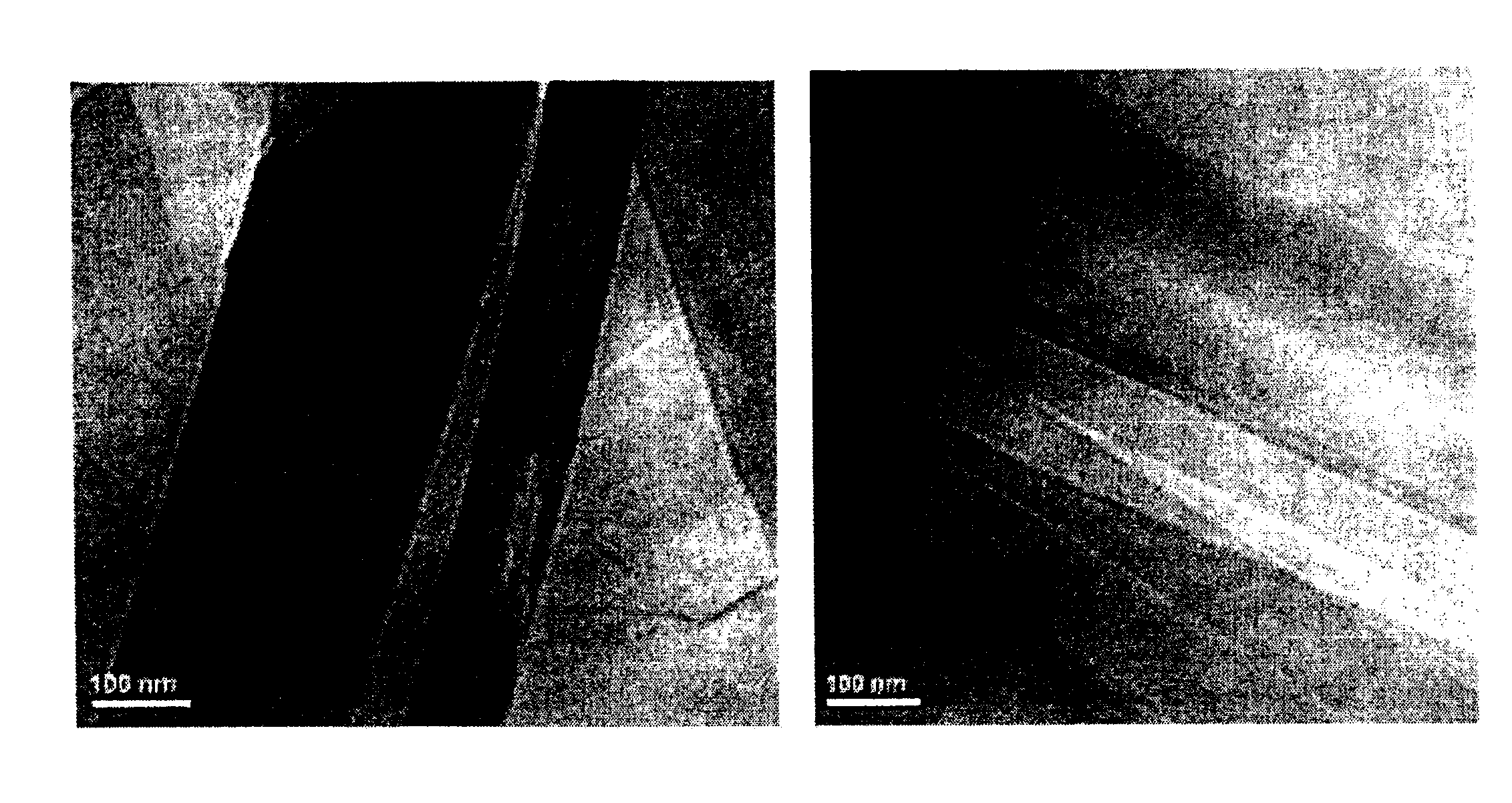Substrate-Independent Layer-by-Layer Assembly Using Catechol-Functionalized Polymers
a technology of catechol-functionalized polymers and substrates, applied in the direction of coatings, liquid surface applicators, pretreated surfaces, etc., can solve the problems of complex multifunctional and multi-layered films
- Summary
- Abstract
- Description
- Claims
- Application Information
AI Technical Summary
Benefits of technology
Problems solved by technology
Method used
Image
Examples
example 1
Synthesis of Catechol-Functionalized Polymers
[0061]Catechol-functionalized Polyethylenimine (PEI-C). Poly(ethylenimine) (PEI), a cationic polymer with a history of use in LbL assembly [10, 15], was conjugated with 3-(3,4-dihydroxyphenyl)propionic acid to make catechol-functionalized PEI (PEI-C) (FIG. 1A). The degree of catechol modification in PEI-C was 63% as determined by the ninhydrin test, thereby preserving the cationic character of the polymer for use in LbL while at the same time mimicking the high catechol content of mussel adhesive proteins [12].
[0062]3 g of PEI (Mw=25 ikDa, Sigma-Aldrich) was dissolved in 300 ml of PBS solution adjusted to pH 5.5 using 1 N HCl solution. 1.52 g (17.4 mmol) of 3-(3,4-dihydroxyphenyl) propionic acid and 2.71 g (34.9 mmol) of EDC were added, and the pH of the reaction solution was maintained at 5.5 for 2 hour with 1.0 N NaOH. Unreacted chemicals and urea byproducts were removed by extensive dialysis. Degree of substitution was determined by ni...
example 2
Layer-By-Layer Assembly
[0067]In this example, the inventors demonstrate the Layer-by-Layer (LbL) assembly of films on various substrates.
[0068]PTFE, PE, PC, PET, PMMA, Si, and Au surfaces were ultrasonically cleaned in deionized water for 5 min and transferred to the PEI-C and HA-C solutions (5 mg / mL in water, pH 6.5) for LbL assembly. The following cycle was generally used: (1) PEI-C for 3 min, (2) wash in water for 1 min, (3) HA-C for 3 min, and (4) wash in water for 1 min. For PTFE, the first PEI-C / HA-C adsorption was carried out for 2 hrs, and subsequent steps were same as described. A control experiment involving LbL on PTFE using as-supplied PEI (no catechol) in each assembly step was performed with overnight adsorptions (18-24 hrs). The same method was used for heterogeneous assembly of PEI-C / PAA (Mw=90 kDa, Polysciences) followed by alternating PLL / PAA adsorption. Concentrations of PAA and PLL (Ave Mw=28,000 Da, Sigma-Aldrich) were 3 mg / mL in 10 mM Tris, pH 7.0.
[0069]Charact...
example 3
LbL Assembly on PTFE
[0071]The inventors first demonstrated LbL assembly on PTFE, an example of a particularly challenging substrate for LbL due to its anti-adhesive property [18]. The progress of LbL assembly was monitored by X-ray photoelectron spectroscopy (XPS) as shown in FIG. 3. The intensity of fluorine 1s (F1s) (690 eV) and carbon 1s (C1s) (292 eV, C-F) peaks from bare PTFE (FIG. 3A, top) decreased after the first cycle of PEI-C / HA-C assembly (FIG. 3A, middle) and completely disappeared after only three cycles (FIG. 3A, bottom). The fluorine composition at the PTFE surface decreased from 69 percent initially to only 1.6 percent after two-cycles of PEI-C / HA-C assembly (FIG. 3B), demonstrating well-controlled LbL deposition on untreated PTFE. Contact angle measurements clearly showed the stark contrast in wetting characteristics of the PTFE surface before and after LbL assembly (FIG. 3C-D); the advancing contact angle (θadv) decreased from 115° for unmodified PTFE to 27.8° afte...
PUM
| Property | Measurement | Unit |
|---|---|---|
| molecular weight | aaaaa | aaaaa |
| binding energy | aaaaa | aaaaa |
| weight percent | aaaaa | aaaaa |
Abstract
Description
Claims
Application Information
 Login to View More
Login to View More - R&D
- Intellectual Property
- Life Sciences
- Materials
- Tech Scout
- Unparalleled Data Quality
- Higher Quality Content
- 60% Fewer Hallucinations
Browse by: Latest US Patents, China's latest patents, Technical Efficacy Thesaurus, Application Domain, Technology Topic, Popular Technical Reports.
© 2025 PatSnap. All rights reserved.Legal|Privacy policy|Modern Slavery Act Transparency Statement|Sitemap|About US| Contact US: help@patsnap.com



